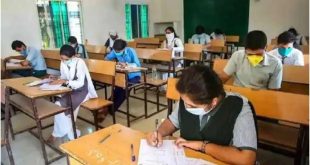 Women Reservation Bill in Uttar Pradesh: A Historic Move by the Cabinet
Women Reservation Bill in Uttar Pradesh: A Historic Move by the Cabinet
In a significant development, the Cabinet of Uttar Pradesh has given its approval to the Women Reservation Bill, allocating a groundbreaking 33% reservation for women. This momentous decision has been long-awaited, as the bill has faced political opposition for the past 27 years. With the bill’s passage in the Cabinet, the hope is that it will also receive approval from both houses of Parliament. In this article, we will delve into the implications of this 33% reservation bill for women in the largest state of India, Uttar Pradesh.
A Long History of Struggle
The Women Reservation Bill was first introduced in 1996, marking a historic moment in Indian politics. Despite being passed by the Rajya Sabha in March 2010, it lapsed in the Lok Sabha. This setback was a result of the bill failing to secure passage in both houses of Parliament. Now, with the approval of the 33% Women Reservation Bill by the Modi Cabinet, it’s crucial to understand how it will impact the most populous state in the country.
Reshaping Lok Sabha and Vidhan Sabha
Before we delve into the potential impact of the Women Reservation Bill in Uttar Pradesh, we must grasp the current composition of the Lok Sabha and Vidhan Sabha. Uttar Pradesh boasts 80 seats in the Lok Sabha and 403 seats in the Vidhan Sabha. With 33% reservation for women, this translates to 26 Lok Sabha seats being reserved for women, and 132 Vidhan Sabha seats earmarked for female candidates. This signifies that, in any case, a minimum of 26 women will represent Uttar Pradesh in the national Parliament, and 132 women will find a place in the state legislative assembly.
The Implications of 33% Reservation
The impact of the 33% reservation for women in Uttar Pradesh’s politics cannot be overstated. It brings a paradigm shift in how political representation works in the state. Here are some key aspects to consider:
1. Rotation System
The bill proposes a rotation system for reservation, ensuring that different sections of society, including Scheduled Castes (SC), Scheduled Tribes (ST), and Anglo-Indians, also benefit from reservation. This will lead to a more inclusive representation of women in politics.
2. The Current Scenario
Currently, the representation of women in the Uttar Pradesh Vidhan Sabha is meager, with only 48 female MLAs from various parties out of a total of 403 seats, accounting for just 12% of the assembly. Similarly, in the Legislative Council, women hold only 6% of the seats. In the Lok Sabha, out of 80 seats, there are only 11 female MPs, constituting a mere 14% representation.
What Sets the Women Reservation Bill Apart
This historic bill, passed by the Cabinet, not only reserves 33% of seats for women but also incorporates a rotation system, making it more inclusive than previous attempts. It aims to bring forth a more balanced and diverse representation in the political landscape of Uttar Pradesh.
In conclusion, the approval of the 33% Women Reservation Bill in Uttar Pradesh marks a significant step toward achieving gender parity in politics. This move is expected to have a profound impact on the state’s political landscape, paving the way for more women to participate in decision-making processes. As Uttar Pradesh sets an example, it encourages the rest of the country to follow suit in promoting gender equality in politics.
 Suspense Crime Sach Ka Dam
Suspense Crime Sach Ka Dam


